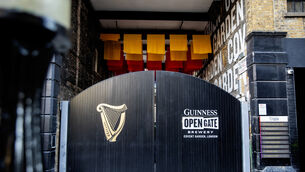Poor outlook in UK takes its toll on sterling
Service sector output was unchanged, while construction output rose by 0.3% in the quarter.
The decline in the fourth quarter came after a strong 1% rise in Q3, which was preceded by a fall in GDP in the first half of the year.
The Olympics and the Queen’s Diamond Jubilee celebrations impacted the quarterly data last year.
Essentially, the UK economy has been broadly flat over the past two years. GDP in 2012 was unchanged from 2011 and it also showed no change in the final quarter of 2012 on a year-on-year basis.
It is worth noting also that GDP is still 3% below its pre-crisis peak, reached before the start of the recession in early 2008. The recovery in activity has been disappointingly weak then, especially given the severity of the 2008-09 recession.
Unfortunately, the UK economy is still facing many of the same headwinds that have weighed on the recovery to date, including deleveraging by the household sector, restricted credit conditions and fiscal tightening, as well as still high unemployment, fragile consumer confidence and weak income growth. Meanwhile, the sluggish global economy and the recovery by sterling in 2011-12 pose challenges for the traded sector.
Recent UK business survey data have not been that great. The services PMI fell back below 50 in December and, at 48.9, was at its lowest level since Apr 2009. The composite PMI dropped to 49.9 in the final quarter of 2012, its lowest level since mid-2009. Meanwhile, the CBI factory orders balance fell back in January. Against this, however, the manufacturing PMI averaged 51 in December/January, rising above 50 for the first time since last March.
One bright spot in the UK last year was the jobless rate fell to 7.7% by November from 8.4% at end 2011. The claimant count in December fell to its lowest level since mid-2011. Meanwhile, the economy enjoyed strong employment growth of almost 2% last year, adding over 550,000 jobs.
This seems very strange for an economy which witnessed a double-dip recession last year. It points to a high level of labour hoarding, with productivity rather than employment becoming the shock absorber for the weakening economy.
The expectation is that the economy should improve slightly in 2013. The BoE’s latest Credit Conditions survey showed a record rise in credit availability during Q4 2012, with a further significant rise expected in Q1 2013, which may help domestic demand. The traded sector should benefit from the recent marked weakening of sterling. However, there are still powerful headwinds restraining economic growth in the UK. The IMF in its January update forecast UK GDP of 1% for this year. We think that it could be even weaker at around 0.5%.
The poor outlook for the UK has started to take its toll on sterling, which lost almost 4% in value in January. There are concerns that economic weakness will worsen its budgetary problems and cause it to lose its AAA rating.
The UK also continues to run a large balance of payments deficit despite the very weak domestic economy, which caused the Bank of England to question whether the currency is overvalued. Meanwhile, the abating debt crisis in the eurozone has seen an unwinding of the flows out of the euro into sterling that occurred in 2011/12.
All in all, market sentiment has turned against the British currency and further sterling weakness looks to be on the cards, with the 90p level against the euro a likely target.
Oliver Mangan chief economist, AIB
















